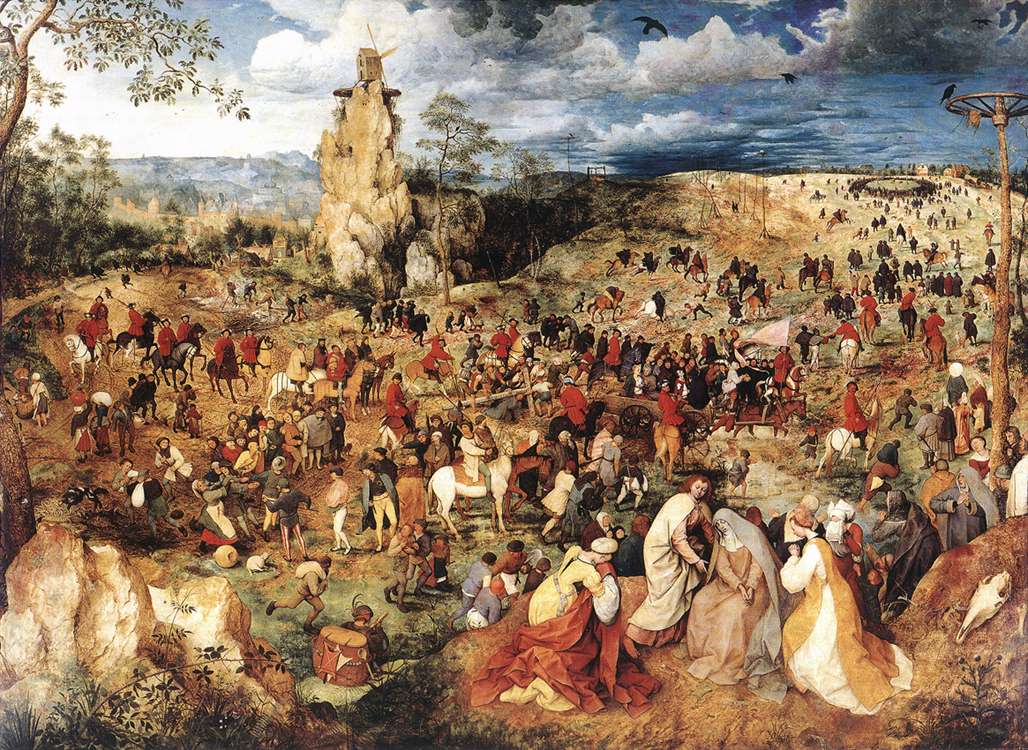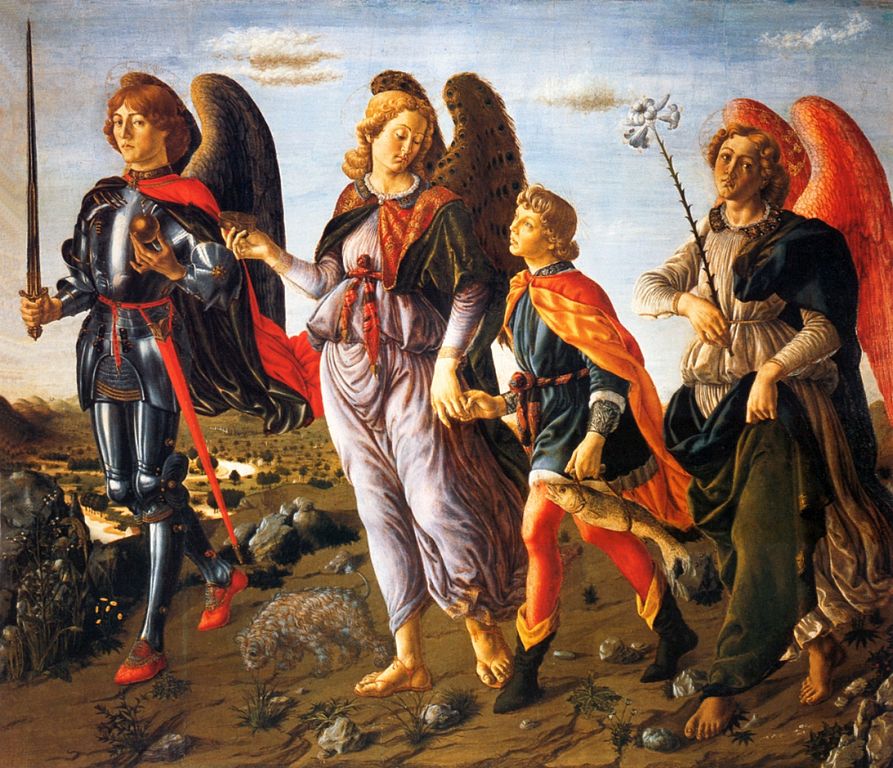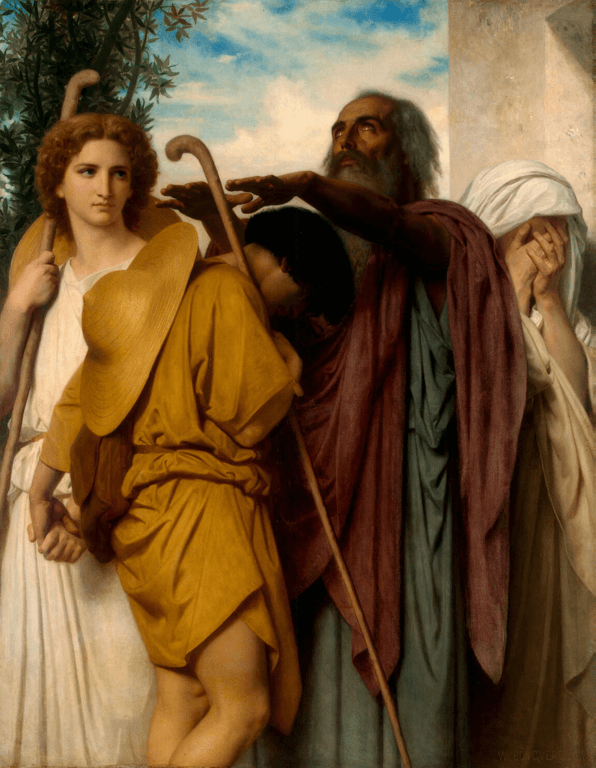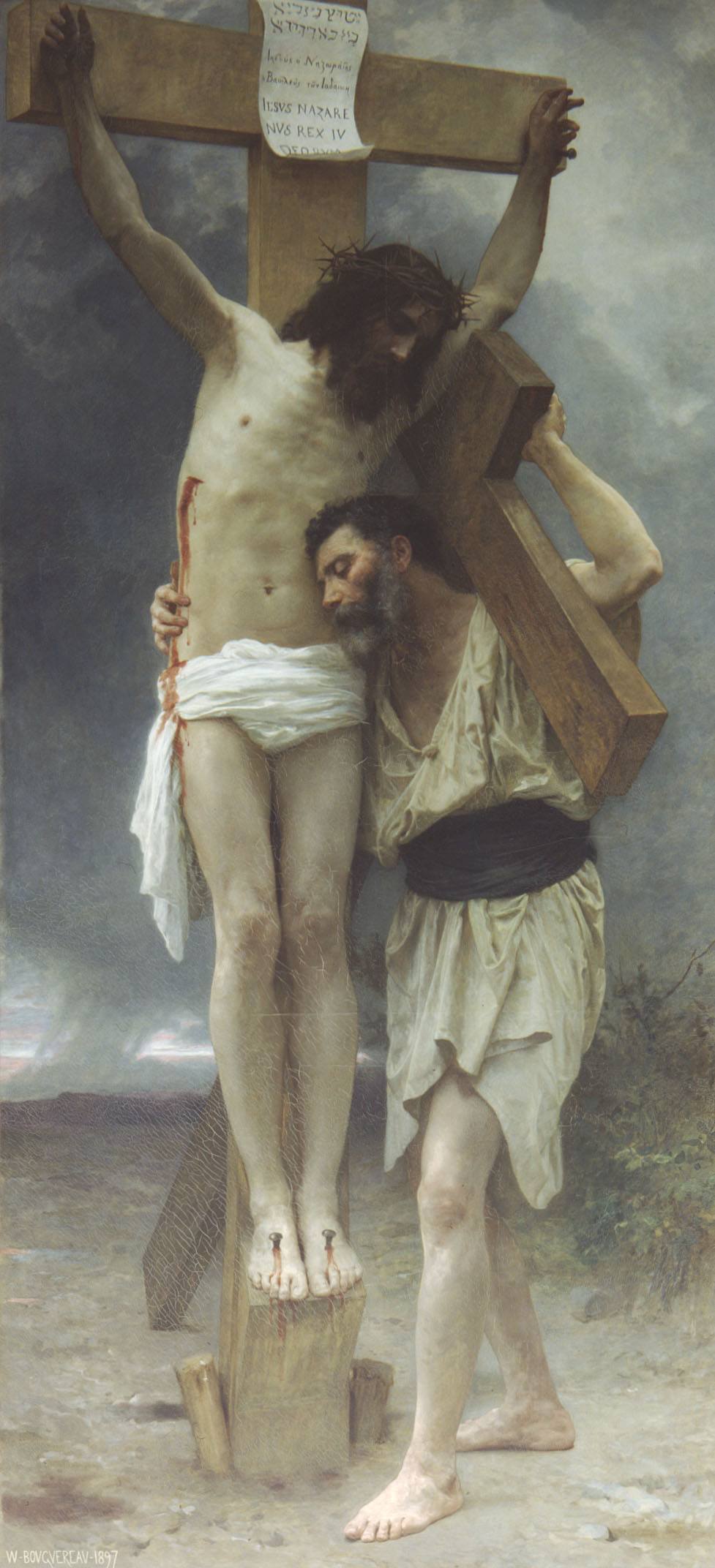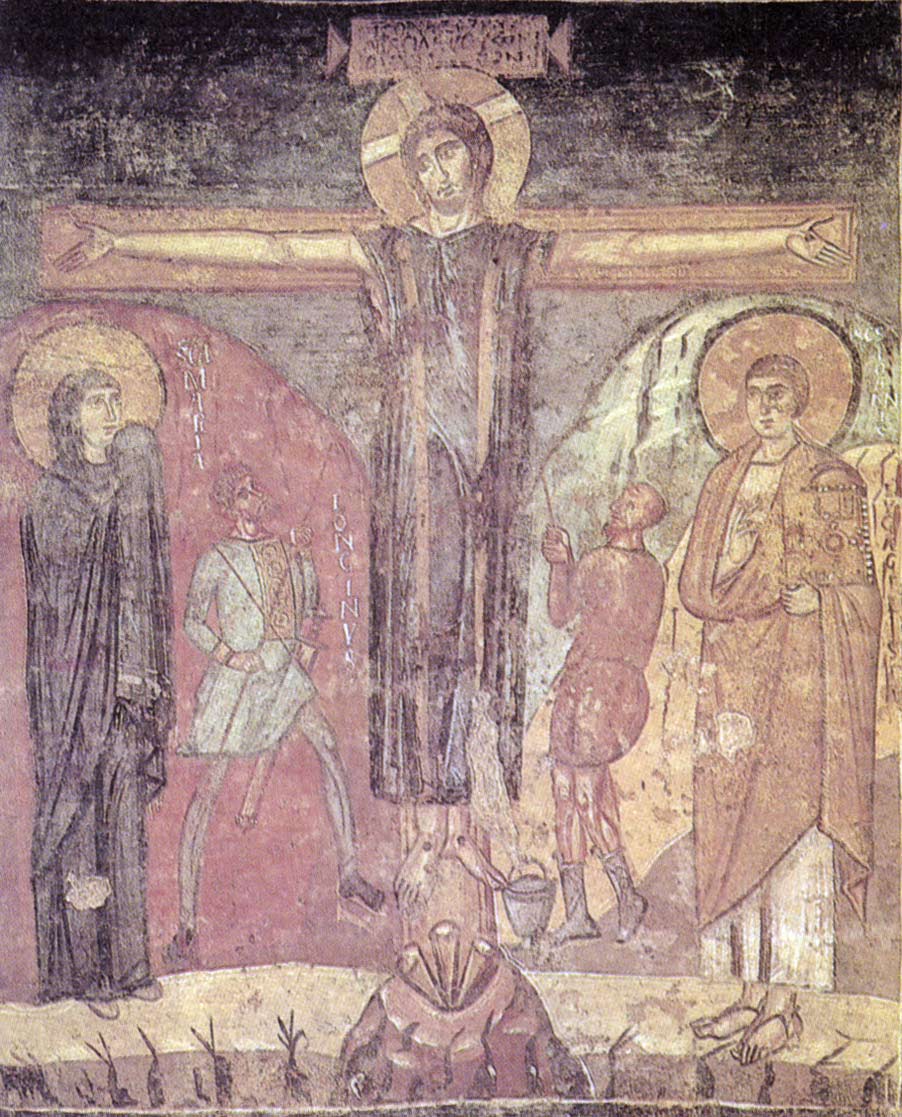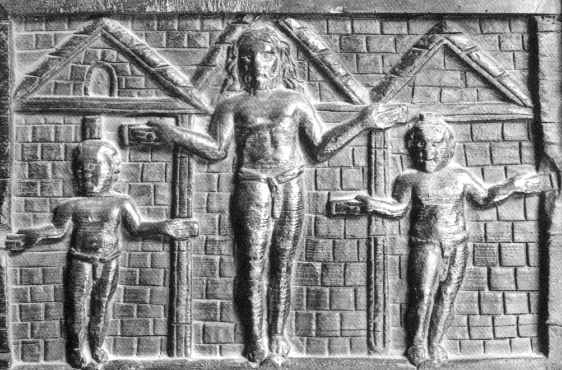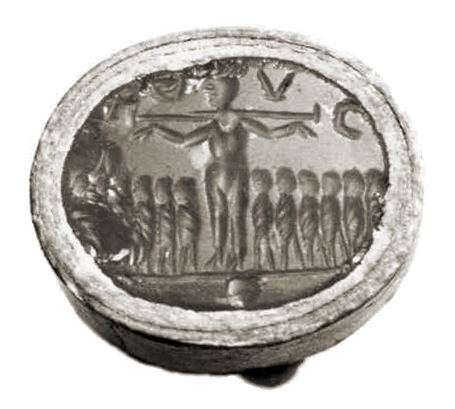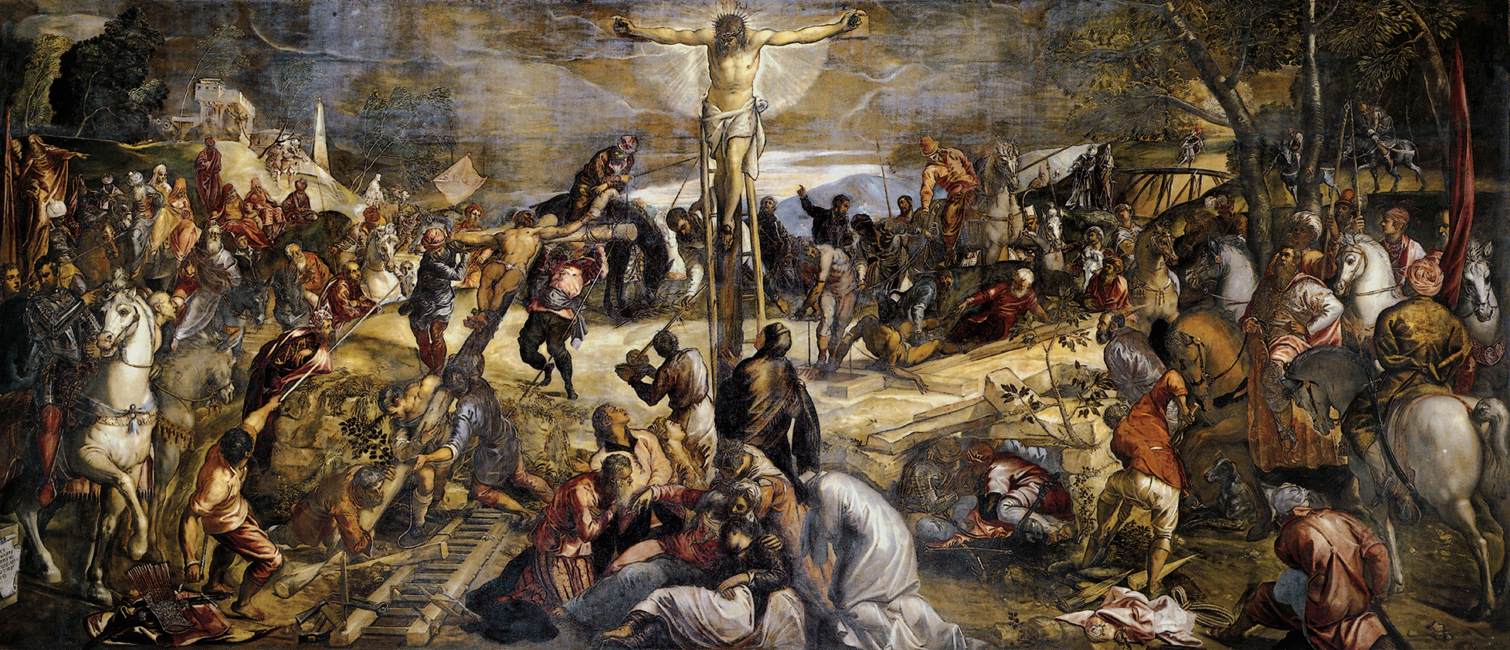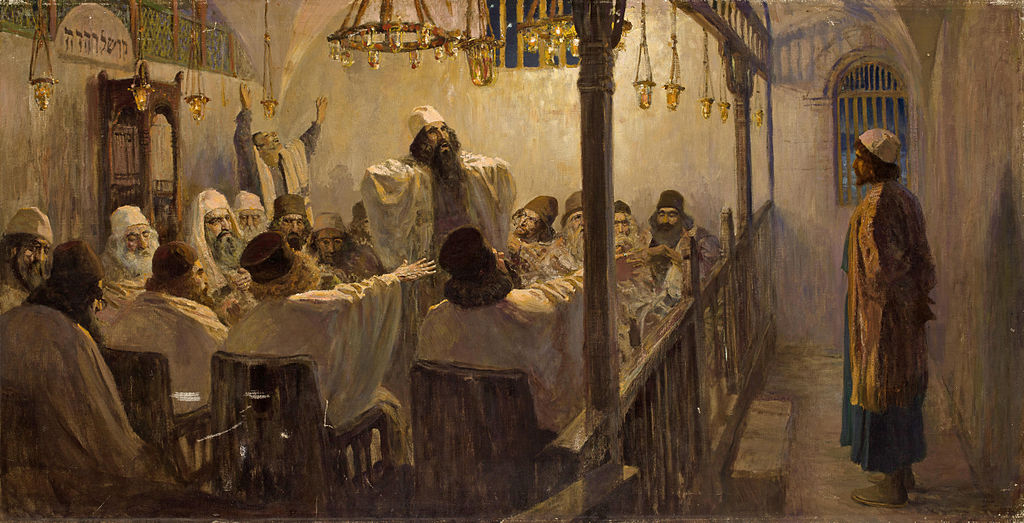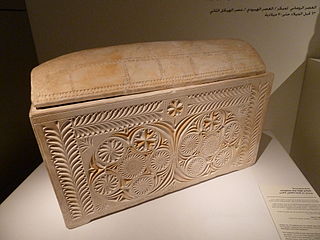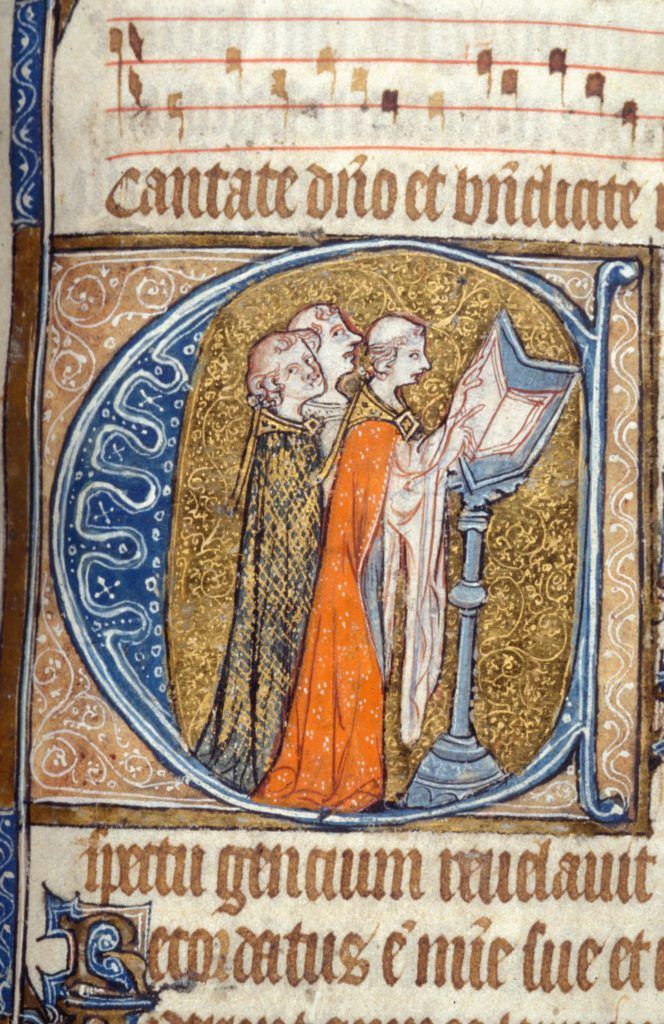We read the following from John’s Gospel:
And they took Jesus and led Him away, and carrying the cross by Himself, He went out to the place called Place of a Skull (which is called in Hebrew ‘Golgotha’), where they crucified Him, and with Him two others: on this side and on that side, but in the middle Jesus (John 19:16b-18).
Nowadays, it is common to assume that the Golgotha of the Gospels was a sort of hill located a good distance from the hustle-and-bustle of Jerusalem (hence the common appellation: ‘Mount Calvary’). Many artists and filmmakers have followed suit: sometimes to the extent of showing it as a very high and steep ridge, as Mel Gibson does in his famous film The Passion of the Christ. There are even hymns entitled, “There is a Green Hill Far Away,” or “On Golgotha’s Hill Christ the Son was Crucified.“
Close reading of the Gospel accounts themselves however do not say anything about the location, whether it was a hill – or for that matter, that the ‘Skull Place’ was an elevated area at all; they all just say something to the effect that it was a “place (Greek, topos) called ‘Skull’.” This may be one of the cases where popular conception can color our reading of the Scriptures.
First of all, there is no explicit mention of Golgotha as a raised place until the 4th century, when it is spoken of as a monticulus (‘little hill’) by the anonymous pilgrim of Burdigala (Bordeaux).
The expression does not occur again until once in the 6th century, after which we do not come across it until Bernard the Pilgrim visited Palestine in the 9th century and spoke of a Mons Calvariae. From thence the expression was adopted by Western writers and became popular.
The early Greek Christian writers, with the exception of St. Gregory of Nazianzus (c. 329 – 389/390) and St. Cyril of Jerusalem (ca. 313 – 386), also never speak of it as being connected with a hill or a height, and it must be remembered that both lived a bit after the traditional area, where the Church of the Holy Sepulchre now stands, was officially discovered by Constantine.
Early Christians seem to have tended also to think that Golgotha was the name of the whole area which contains the spot where Jesus was crucified rather than that specific outcrop of rock, which is more properly known as the Rock of Calvary. Even when it was determined as the actual location of the Crucifixion, it still did not become ‘the’ Golgotha until about the 6th century AD. Before that, it was merely known as “the rock of the Cross.” The basilica itself was understood to be “on Golgotha,” which was understood to be a far wider area.
Christian iconography itself may have also played a part in making this idea widespread. Some trace it to the iconographic depiction of Jesus’ cross as standing on a little mound (in later artworks, a skull – usually identified as Adam’s – may be seen beneath it): see the icon on the left for such an example. Artists then have almost invariably depicted the crucifixion as occurring on a high hill or on an elevated ground, probably to carry out the idea that it could be seen from afar as well (cf. Matthew 27:55-56; Mark 15:40-41; Luke 23:49). Thus, the idea of a ‘Mount Calvary’ solidified in our minds.
The identification of Golgotha as a hill may also probably come from the fact that the traditional area (on the right of the present entrance of the Church of the Holy Sepulchre) was an isolated knoll presently about 5-6 meters high, located on the tilled saddle of part of the slope of a hill, possibly known once as Mount Gareb, but this would not have looked in any way like a hill: rather, it would have looked like an elongated crater.
The entire area had once been a quarry for building stones during the Iron Age (ca. 10th-7th centuries BC), and was characterized by irregular rock cuttings, scarps and caves. The slope had been substantially cut away by the quarrying, and good-quality stone eventually ran out, leading to its abandonment.
Archeologists believe that the area was then filled with arable soil, presumably to turn the ugly quarry remains into a beautiful garden fit for growing crops. The city-gate near it known as the ‘Gennath‘ (Garden) Gate may have gained its name from the fact that this region was quite intensely farmed, despite the irregular features of the topography, with caves and rocky scarps and protrusions, interposed with areas of cultivation.
Tombs and cultivated areas could lie side by side, since according to Jewish law the uncleanness of tombs need not affect cultivation, and gardens and tombs were often located close by. Indeed some 1st century AD tombs were found only 49 feet away from the edicule (Latin aedicula “little house”) containing the supposed tomb of Christ.
This hump may have been especially cut back in either the 2nd century, for the pagan temple that was built on the site, or the 4th century, for the Martyrium complex of the Constantinian basilica, or simply a remnant of the area’s days as a quarry – scholars are still in disagreement. But whenever it reached its present form as a kind of rock finger, a number of scholars think that would have been quite difficult, if not impossible, for three people to have been crucified on the summit of this 9 to 13-meter outcrop (measuring 3.5 x 1.7 meters) due to lack of adequate space for three crosses, not to mention that its slopes are too steep to allow easy access.
Thus, while this rock may have been a monument or signpost marking the general location of Golgotha, it was not the actual spot where the crosses would have stood.
The Roman rhetorician Quintilian (ca. AD 35-100) once stated that: “Whenever we crucify the guilty, the most crowded roads are chosen, where most people can see and be moved by this fear. For penalties relate not so much to retribution as to their exemplary effect.”
This was of course demonstrated to great effect in the aftermath of the Third Servile War (73-71 BC), when 6,000 surviving slaves who joined Spartacus’ rebellion were crucified along the roadside of the Appian Way from Rome to Capua (approx. 200 kilometers).
Since one of the purposes of crucifixion was to publicly humiliate the victim, making him a living billboard to deter any possible crime and rebellion, crucifying someone in public places where a lot of people can see him is natural.
The Gospels themselves write that it was “those passing by” who taunted Jesus (Matthew 27:39), and that people saw the placard above His head “because the place was near to the city where Jesus was crucified.” (John 19:20) These statements would have made not much sense if the Lord was crucified far away on a high hill a good distance off the roads and the city!
Hence, one writer (Joan Taylor), while accepting the authenticity of the traditional location of the tomb, propose that Jesus, and the two criminals, were probably crucified somewhere closer to the roadside and to the Gennath Gate than the traditional spot, which could have been the backdrop of the event, rather than its location. She proposes that this spot was eventually buried and obscured when a street was built on the site.
Thus, it would seem that the reason why Constantine built his basilica in a more northward location is because it was more convenient – underneath the pagan temple, according to local Christian tradition, also lies the possible site of Jesus’ tomb; also, it was a prime building spot and would have saved the trouble of having to demolish the road.
Joan Taylor writes: “After all, with the miraculous discovery of the True Cross in the region of the temple temenos, there was convincing proof that everyone should look northwards to the site of the crucifixion anyway. For his localization, an attesting miracle was clearly necessary and thereafter those that pointed southwards could no longer be given credence.”
The image shows, “Christ Carrying the Cross,” by Pieter Bruegel the Elder, painted in 1564.
